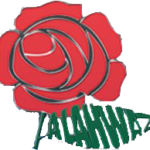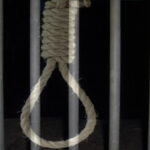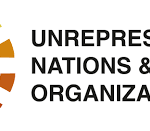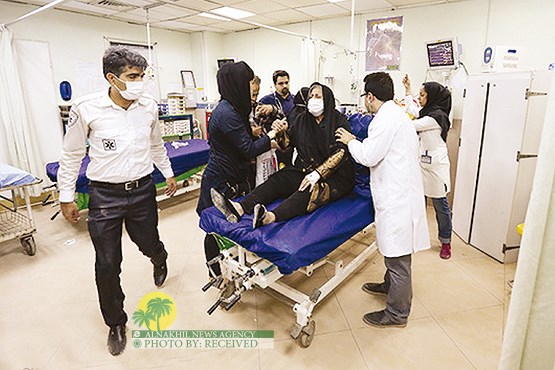DUBAI (Saud al-Zahed)
Regime wants to erase Arab identity: activist
A long dispute between Iran’s elite Revolutionary Guards and the Heritage Authority at the 
predominantly Arab province of Khuzestan ended with the demolition of the palace of Feilieh, one of the landmarks of Ahwazi culture in Iran.
A military force destroyed the palace of Sheikh Khazaal al-Kaabi, the ruler of the then semi-autonomous Sheikhdom of Muhammarah, now called Khorramshahr, and the last Arab prince in Iran, local press reported.
The mansion, which overlooks the Shatt al-Arab waterway, is commonly known as the Feilieh Palace and is considered an integral part of the Ahwaz heritage.
After failing to stop the demolition of the palace, Hassan Mohseni, spokesman of the Heritage Authority, said the authority will file a complaint against the Revolutionary Guards, according to the semi-official Fars News Agency.
The Feilieh Palace was built in 1917, eight years before the end of Arab rule in the Khuzestan province, and was listed as a cultural heritage site under the number 2845.
Chauvinistic trend
The demotion of the Feilieh Palace demonstrates the growing chauvinistic attitude of the Iranian regime towards the Arab minority as well as the collaboration of the authorities in Khuzestan, said Yousef Azizi, Ahwaz journalist and human rights activist and secretary general of the Association against Anti-Arab Discrimination in Iran.
“Some officials in the province of Khuzestan try to cater to the needs of the Iranian government and they did that to satisfy their accomplices in Tehran,” he told Al Arabiya.net.
“The main purpose of the Iranian government is to erase the Arab heritage in Iran through demolishing all proof of its existence.”
Azizi added that the demolition is also motivated by the government plan to take advantage of the priceless land on which the palace was located.
“Because of the corruption that pervades its institutions, the Revolutionary Guard is not only dominating political decision making but also the economy.”
The Feilieh Palace, Azizi added, is not the first cultural site that suffers this fate. The government also demolished the palace of Sheikh Abdul-Hamid, son and heir of Sheikh Khazaal al-Kaabi in the city of Ahwaz, the capital of Khuzestan, and turned it into a parking lot.
“The government also demolished another palace that belonged to Prince Khazaal in the city of al-Hamidiya north of Ahwaz city. It was leveled to the ground,” Azizi said.
Sheikh Khazaal al-Kaabi
Prince Khazaal was known for his ties with neighboring Arab countries and his calls for an Arab 
unity before the emergence of the concept of nation-state. Among the Arab leaders he met were Saudi King Abdul-Aziz Al Saud and Kuwaiti Emir Sheikh Mubarak al-Sabah.
Although the Bani Kaab tribe, from which Prince Khazaal hails, waged war on Kuwait in 1783, they established friendly ties 120 years later during the reign of the prince, who built a palace in Kuwait next to the Dasman Palace.
The Kuwaiti National Council for Culture and Arts has recently renovated the Prince Khazaal Palace in commemoration of the Ahwaz-Kuwaiti relations.
Arabs in Iran
The number of Arabs in Iran amount to five million, the majority of which live in the western province of Khuzestan, commonly known as Arabestan or the “land of Arabs,” the province’s name till 1936. Khuzestan is also referred to in history and geography books as the Ahwaz.
Arab population in Iran is not confined to Khuzestan. Huwala Arabs, descendants of Sunni Arabs who emigrated from the Arabian Peninsula, live on the shores of the Gulf.
The eastern province of Khorasan also has an Arab population, yet unlike their Khuzestan counterparts, who consider Arabic their mother tongue, they mostly speak Persian. Arab-Iranians also live in the provinces of Bushehr, Fars, and Hormozgan.
Arabs in Iran have been accusing the regime of trying to erase their identity especially through the restriction of education in Arabic.
According to article 15 of the Iranian constitution, non-Persian minorities are allowed to get an education in their mother tongues. This not only includes Arabs, but also Turk, Kurdish, Balooch, Turkmen, and Lur minorities. However, this article has been on hold since the 1979 Islamic Revolution.
















+ There are no comments
Add yours